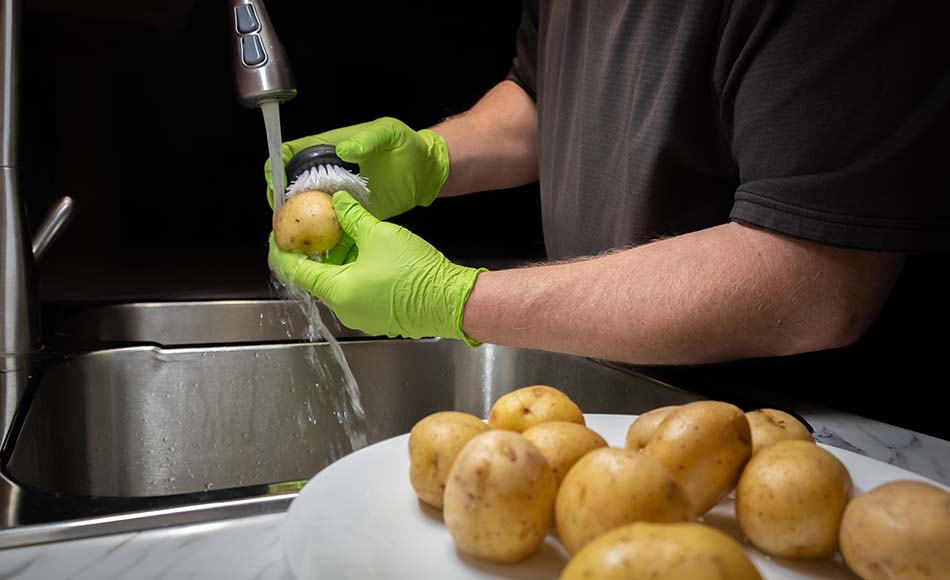Cross-contamination can have serious consequences not only for the wellness of clientele but also for a restaurant’s reputation and bottom line. For foodservice operators that already show their commitment to food safety by wearing gloves, here are three easy ways to take cross-contamination prevention one step further.
Changing Gloves
Changing gloves frequently seems like a straightforward guideline to follow, but this is exactly where many foodservice operations slip up. Although most staff know to change gloves after handling cash, many employees tend to go from food prep, to expo, to serving and then back.
The FDA Food Code instructs users to change gloves when going from one surface to another, whether it be different kinds of foods, from raw to cooked, or from kitchen surfaces to food. Staff must also make sure to thoroughly wash and dry their hands in between glove changes. This step is absolutely necessary and well worth it to keep guests and staff safe.
Using Colored Gloves
Adding a colored glove or two can also improve a kitchen’s cross-contamination prevention efforts. Following a HACCP initiative that utilizes color-coding to mitigate risks, operators can assign a colored glove to any sensitive food group that they work with.
Color-coding gloves allows kitchen managers to verify at a glance that staff are only handling foods of a certain kind and not using the same gloves to prep different categories of food simultaneously. For example, yellow gloves could be assigned exclusively to staff working with raw chicken. Under this guideline, yellow gloves being used to handle any other type of food, like fish, would indicate possible cross-contamination.
The HACCP guide suggests the following color-coding scheme:
- Yellow - Raw poultry
- Red - Raw red meat
- Green - Raw produce
- Blue - Seafood
Loose Over Tight
This technique can be used as an effort to keep food safe while maintaining a quick and efficient service process. It can be time-consuming to constantly be changing gloves in between every single task. For a quick transition from one task and another and back again, staff could use a saddle pack of loose poly gloves or poly mitts.
For example, an employee could be prepping raw chicken for a salad using nitrile gloves and then quickly slip their hand into a poly glove saddle pack to grab a handful of greens. This way the poly glove prevents the nitrile glove from ever touching the greens. The employee could then quickly discard the poly glove and continue prepping the chicken with the nitrile glove.
This is also a great way to save costs, since less tight gloves will have to be wasted.
All in all, preventing cross-contamination takes dedication, attention to detail and persistence. It may take a while to get staff accustomed to following certain guidelines, but in the end, these new habits go a long way to protecting the public’s safety and an operation’s overall success.
Content courtesy of Handgards


